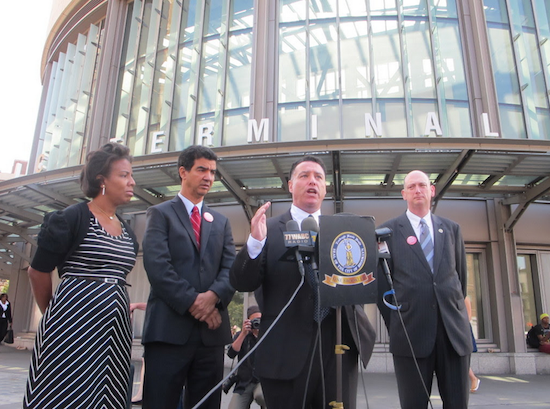LIRR strike would leave ‘reverse commuters’ up the track without a shuttle

With a strike looming, LIRR ‘reverse commuters’ from Brooklyn will awaken to a grim reality Monday morning: there’s no contingency plan for them and few alternative options are available, officials say.
“The Long Island Railroad does not operate on its own lonely island,” Borough President Eric Adams fumed at a press conference convened Thursday morning at the foot of the Atlantic Avenue LIRR terminal. “We cannot have a contingency plan that brings some commuters to their destination but leaves others unaccounted for.”
Adams called the press conference after learning that MTA’s ‘contingency plans’ in case of a strike would only handle commuters from Long Island heading into Brooklyn and Manhattan, but not vice versa. Brooklyn residents who ride the rails out east are essentially stranded, Adams claimed. Options that could help ‘reverse commuters,’ like shuttle buses leaving from Archer Avenue in Jamaica, Atlantic Avenue and even the Navy Yard, connected with ferries and other alternatives, have gone unexplored.
